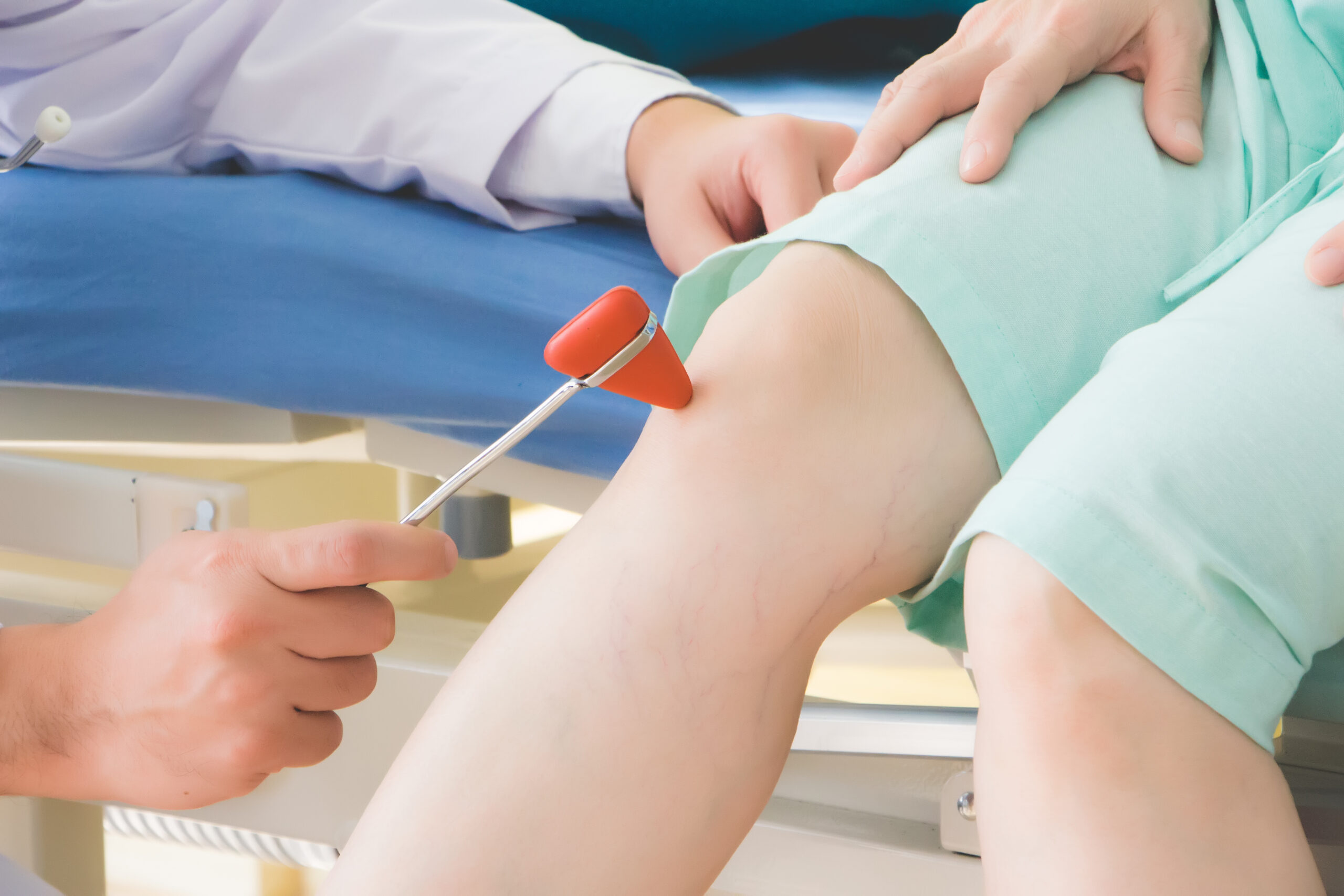Neuromuscular Junction Disorders
Myasthenia gravis, Lambert–Eaton myasthenic syndrome and congenital myasthenic syndromes affect the point where nerves communicate with muscles, causing fluctuating weakness and fatigue. With accurate diagnosis and targeted therapy, many people regain strength and confidence in daily life.

Myasthenia Gravis (MG)
Autoimmune antibodies (most commonly AChR, sometimes MuSK/LRP4) reduce the efficiency of neuromuscular transmission.
Typical features: fluctuating, fatigable weakness—ptosis and double vision, chewing/swallowing or speech difficulty, limb/neck weakness worse later in the day or with repetition; breathing can be affected in severe cases (myasthenic crisis).
Assessment & tests: examination focused on fatigability; AChR/MuSK antibodies, repetitive nerve stimulation (RNS), single-fibre EMG (SFEMG), and chest imaging to look for thymoma.
Treatment: symptomatic pyridostigmine, plus immunotherapy when needed (e.g., steroids with a steroid-sparing agent such as azathioprine or mycophenolate; other options individualised). Thymectomy is considered in selected AChR-positive cases and for thymoma. Crisis plans and medication-interaction advice are provided.

Lambert–Eaton Myasthenic Syndrome (LEMS)
Often paraneoplastic (classically with small-cell lung cancer) or autoimmune without cancer.
Typical features: proximal leg > arm weakness, reduced reflexes and strength improving with brief exercise; autonomic symptoms (dry mouth, constipation).
Assessment & tests: VGCC antibodies, characteristic findings on RNS (increment with high-frequency stimulation), and targeted cancer screening at diagnosis and follow-up.
Treatment: amifampridine (3,4-DAP) for symptomatic improvement, immunotherapy where appropriate, and tumour treatment if present.
Congenital Myasthenic Syndromes (CMS)
Inherited defects in neuromuscular transmission (various genes).
Typical features: childhood or adolescent onset of fatigable weakness—ptosis, ophthalmoplegia, limb/bulbar involvement; may fluctuate with illness or temperature.
Assessment & tests: neurophysiology (RNS/SFEMG), genetic testing with counselling.
Treatment: tailored to genotype (e.g., pyridostigmine or 3,4-DAP for some forms; others require different approaches). Immunosuppressants are not effective as CMS is not autoimmune.
How Dr Francesco Manfredonia can help
-
Accurate diagnosis: differentiates MG, LEMS and CMS from mimics (motor neurone disease, myopathy, motor neuropathies) using targeted history, examination and neurophysiology (RNS and SFEMG).
-
Integrated testing: antibody panels, chest imaging for thymoma, cancer screening for LEMS, and genetic pathways for suspected CMS.
-
Personalised treatment: precise medication titration, clear steroid-sparing strategies, crisis prevention plans, and coordination with respiratory, speech and nutrition teams.
-
Practical guidance: safety advice for driving, work, intercurrent illness, surgery/anaesthesia and medicines that may worsen neuromuscular transmission.
Urgent advice: seek emergency help for rapidly worsening swallowing or speech, marked breathlessness, or inability to hold the head up—these may signal myasthenic crisis.
FAQ
Which medicines can worsen myasthenia?
Certain antibiotics (e.g., aminoglycosides, fluoroquinolones, macrolides), magnesium salts, some beta-blockers and anaesthetic agents can exacerbate weakness. Always check before starting new medicines.
Do all patients with MG need thymectomy?
No. It’s essential for thymoma, and considered in selected AChR-positive generalised MG after specialist review.
Can I exercise?
Yes—graded, paced exercise is encouraged once symptoms are controlled. Over-exertion can temporarily worsen weakness, so programmes are individualised.
How is LEMS different from MG?
LEMS often shows improvement with brief activity, reduced reflexes and autonomic symptoms; it may be linked to an underlying cancer. Antibody tests and neurophysiology help distinguish them.
Will I need lifelong treatment?
Many people require ongoing therapy, but doses change over time. Regular review balances symptom control with side-effects and life goals.
Is pregnancy possible with MG?
Yes—with planning. Treatment is adjusted for safety, and newborns are monitored briefly for transient symptoms.
Are congenital syndromes treated with steroids?
No. CMS is genetic, so treatment focuses on transmission-enhancing medicines and supportive therapies, not immunosuppression.
BOOK YOUR CONSULTATION
Book a consultation with Dr Francesco Manfredonia (Dr FM) for clear diagnosis, compassionate care and a plan built around your life and goals.
